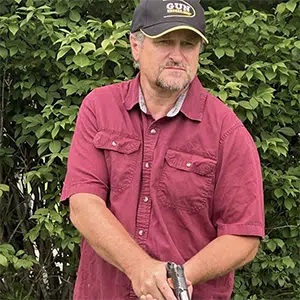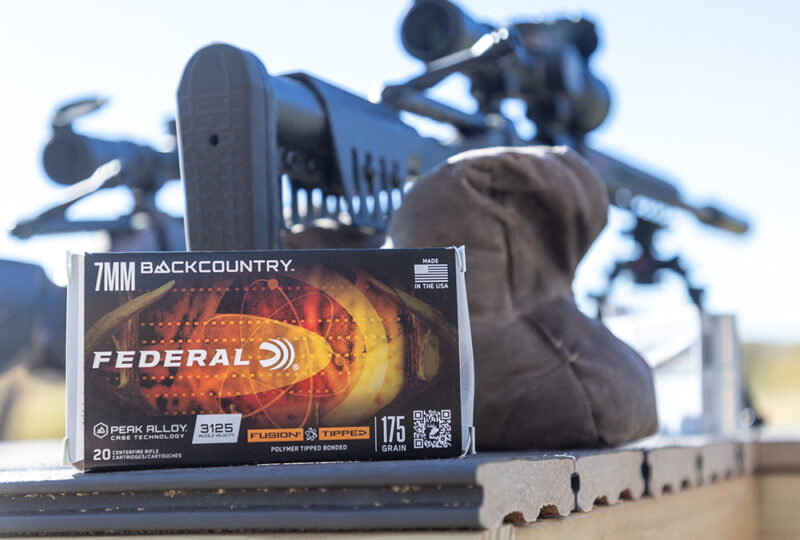
There has been a lot of hype around the new Federal 7mm Backcountry, and for good reason. The published numbers show excellent velocity and downrange energy. In fact, 7mm Backcountry shows velocity from a 16-inch barrel that is on par with other calibers from 20-inch barrels.
That is the benefit of 7mm Backcountry. This round produces magnum-level velocities from a non-magnum round. It does this through the development of a new alloy cartridge case. This Peak Alloy case allows Federal to load the 7mm Backcountry ammo with faster-burning powder, which creates much higher pressure to push bullets down the barrel.
There is no doubt that the numbers behind 7mm Backcountry are impressive, and this new round is getting quite a bit of attention. However, some people have questions. Does it actually make a difference? Can it be reloaded? Is it really worth it? Only individuals can truly answer these questions, but 7mm Backcountry ammo definitely provides some checks in the pro category.
7mm Backcountry Pros & Cons
The Good
More pressure creates higher velocity and energy. It really is just that simple. Federal figured out how to create a case that can handle higher pressures; the case is the weakest link when it comes to safe pressure in firearms. The higher pressure pushes the bullet faster, which creates more down-range energy. The bullet flies faster and hits harder.
What’s even better is that this round is doing this in shorter barrels. The Federal 7mm Backcountry reaches 3,000 fps and 3,397 ft-lbs. of energy with a 170-grain bullet from a 20-inch barrel rifle. This round even pushes 195-grain Berger Elite Hunter bullets to 2,850 fps from the same 20-inch barrel, a 24-inch barrel sends this bullet at the target at 3,000 fps, producing 3,897 ft-lbs. of energy.
What’s the big deal about using shorter barrels? Put a suppressor on a 24-inch barrel and you’ll know. The average suppressor adds 6 to 8 inches, so a 24-inch barrel becomes 30 to 32 inches. A 20-inch barrel becomes 26 to 28 inches, and so forth. A shorter barrel might not matter to some, but those operating in dense forests or small deer stands benefit from a shorter overall rifle. Some folks might even want to go with a 16-inch barrel with a suppressor, which still produces some decent velocity. It is just easier to manipulate a shorter barrel rifle in tight places. Of course, with pros always come cons.
The Bad
With all of the pros of 7mm Backcountry, there have to be some cons. To start, ammunition might be a bit difficult to find at first. This round requires a special case, which is likely proprietary. Federal might be the only company producing it for a while. This could limit availability in some areas. And while the 7mm Backcountry ammo is reloadable, Federal has released a video showing the process, the procedures and specifications haven’t been released.
Recoil could also be an issue with some. With higher energy, firearms produce higher recoil. This, of course, is relative, as numerous factors affect recoil and felt recoil, which are different. Recoil is part of Newton’s Third Law that states, “for every action, there is an opposite and equal reaction.” The energy going out of the barrel is the same energy going back into the shoulder.
The recoil of the 7mm Backcountry is comparable to 7mm PRC, higher than 7mm Rem. Mag. and much less than .300 Win. Mag. Backcountry also produces less recoil than 28 Nosler, another fast and powerful round. Of course, felt recoil can be mitigated by heavier rifles, recoil pads and muzzle devices. Individual shooters have to make the decision regarding recoil, ammo availability and reloading. None of that changes, however, the purpose or benefits of this round.
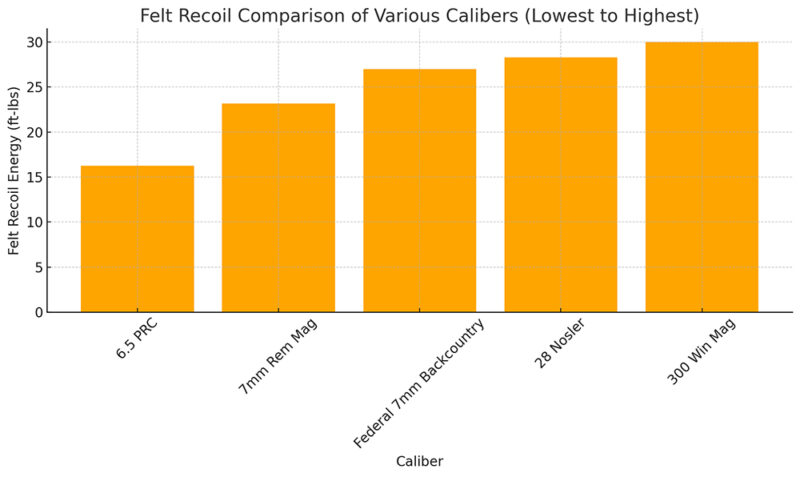
7mm Backcountry Ammo Comparisons
7mm Backcountry vs. 7mm Rem. Mag.
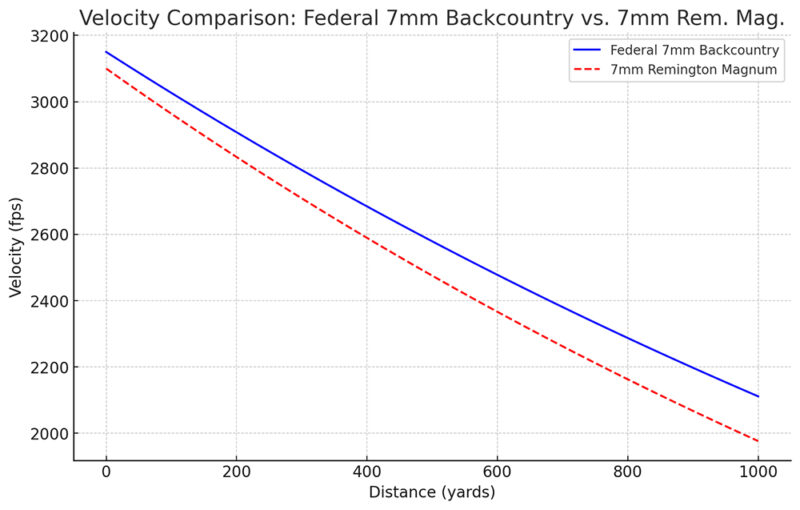
When put up against the 7mm Rem. Mag., the 7mm Backcountry comes out ahead in both velocity and energy out to 1,000 yards. Bullet drop is almost identical between the two out to 500 yards. The Backcountry does this with a shorter barrel.
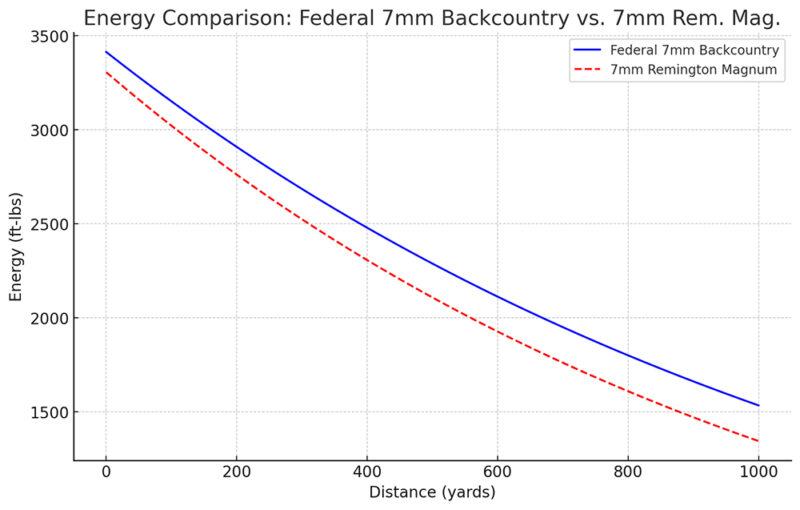
7mm Backcountry vs. 6.5 PRC
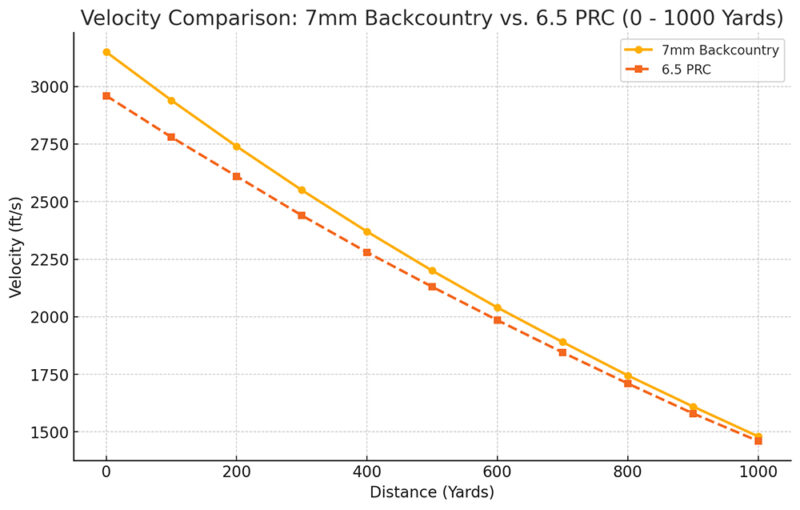
The Backcountry starts higher in velocity and energy over 6.5 PRC and stays there all the way to 1,000 yards. After leaving the barrel, the bullets drop together to about 200 yards, where 6.5 PRC starts dropping faster.
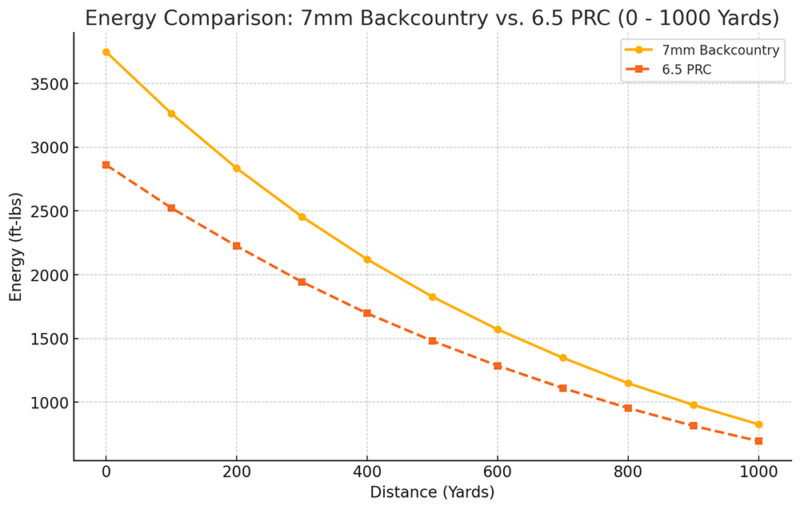
7mm Backcountry vs. .300 Win. Mag.
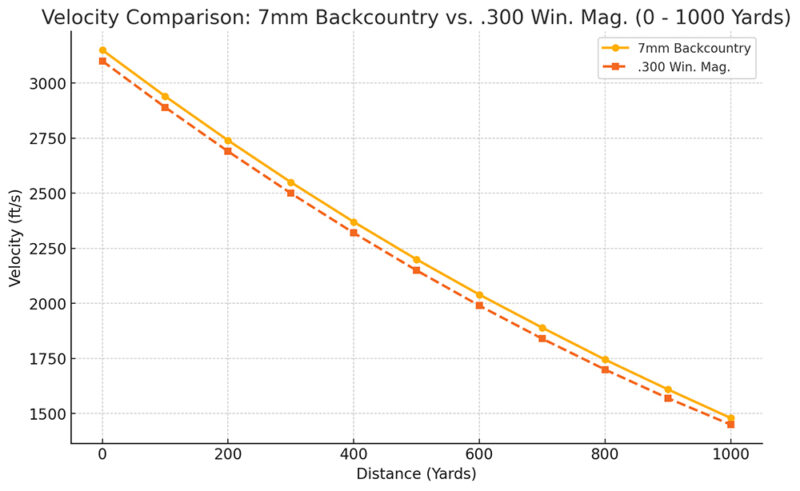
The velocity and energy between Backcountry and .300 Win. Mag. is pretty close to each other, from the barrel to 1,000 yards. The .300 has more energy, but it is also typically using a larger-grain bullet. This means significantly more recoil. The 7mm Backcountry also drops slower.
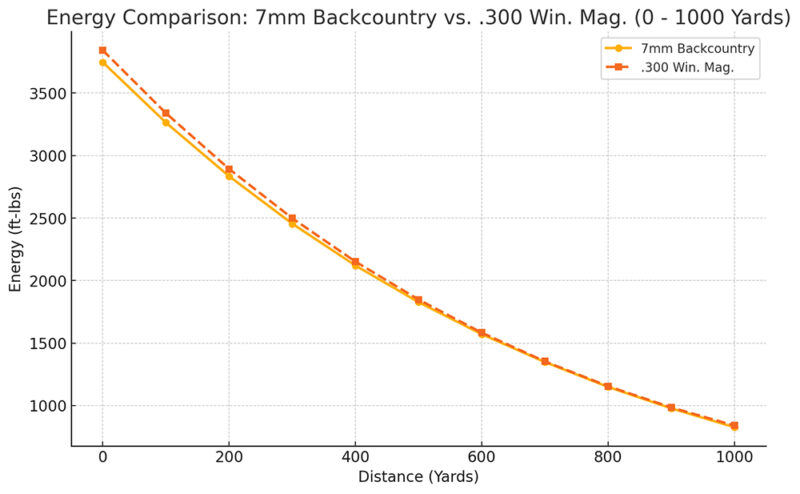
7mm Backcountry vs. 28 Nosler
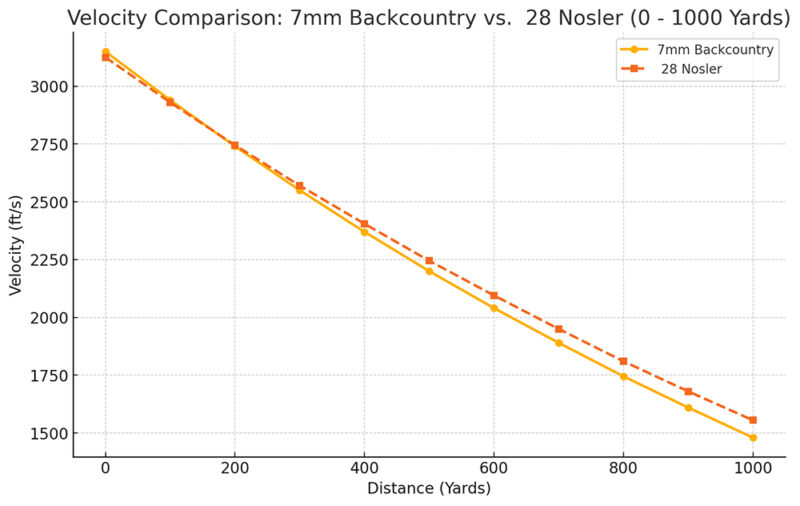
The 28 Nosler has more velocity out to 1,000 yards. It even drops significantly less out to 500 yards. However, the Nosler has 6 extra inches of barrel length. It also provides significantly more recoil than 7mm Backcountry.
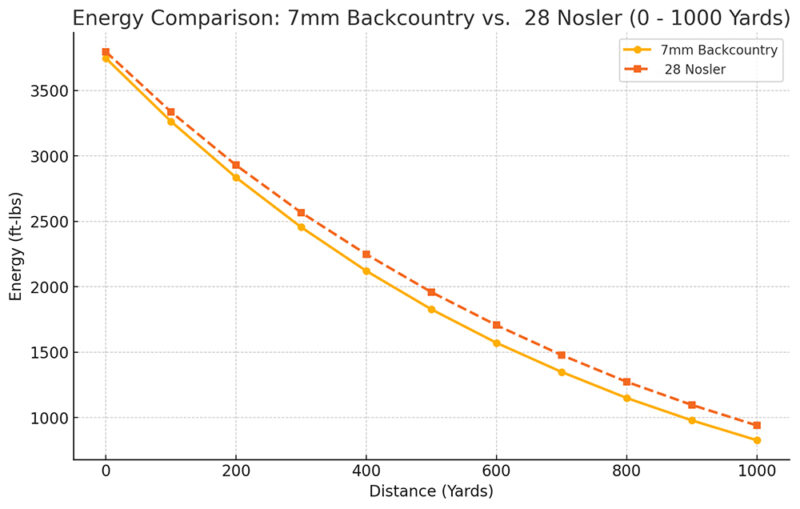
The Reason
While 7mm Backcountry might not be ammunition reinvented, there is little doubt that it is the coolest round to be released in a while. This round is faster out of shorter barrels, which allows the use of a suppressor without sacrificing mobility or velocity. And it does this without a huge increase in felt recoil.
What is most interesting, though, is the Peak Alloy technology that makes the higher pressures possible. More rounds using this technology will be forthcoming. The only questions are, will Federal continue down this path in the front, or will another company develop something similar first, and how long will it take? Regardless, this is a really awesome round, and it’s an excuse to buy a new rifle.
7mm Backcountry Rifles
Something that Federal did absolutely right was partnering with manufacturers to produce rifles chambered in 7mm Backcountry. This could be the best round ever, but it still needs a gun from which to fire. Well, quite a few companies are making that rifle.
- AllTerra Arms — Mountain Shadow (TBD)
- Christensen Arms — Ridgeline FFT ($2,050)
- Fierce Firearms — Mountain Reaper ($3,199)
- Geissele Automatics — King Hunter ($3,889)
- Gunwerks — Magnus (TBD)
- Hill Country Rifles — Custom Classic (TBD)
- Horizon Firearms — Venatic Carbon ($3,999)
- Proof Research — Glacier Series (TBD)
- Pure Precision — Not Yet Announced
- Savage Arms — 110 Ultralite Elite ($3,299); 110 Pro Pursuit Rifle ($2,399); 110 Ultralite ($1,699); 110 Timberline ($1,279); 110 Trail Hunter Lite ($699)
- Seekins Precision — Havak Pro Hunter 2 (TBD)
- Weatherby — Model 307 Alpine CT ($1,995)
